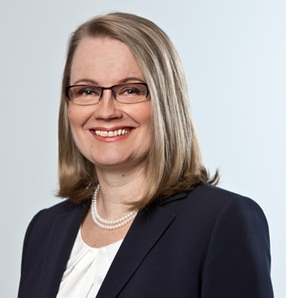SBAB, LF report strong increases to deposit volumes in 2012 results
Feb 14th, 2013
Strong increases in deposit volumes were highlights of full year 2012 results reported by Sweden’s SBAB Bank and Länsförsäkringar Bank last week, with SBAB trebling deposits year-on-year and moving towards its goal of achieving a more balanced funding mix.
Government-owned SBAB reported its results last Thursday (7 February), posting a 215% increase in deposits, which soared from SEK8.8bn in 2011 to SEK27.7bn (Eu3.27bn).
Fredrik Jönsson, head of funding at SBAB Bank, told Nordic FIs & Covered that increasing deposits was an “ambitious” goal that the bank managed to achieve.He said that the bank managed to implement a funding strategy more focused on deposits to achieve a better funding balance.
“We currently offer a rate of 2.2%, which is high if compared with the half percent that is usually offered on the Swedish market,” said Jönsson.
He added that the increase in deposits allowed SBAB to diversify its funding base and reduce its dependency on wholesale funding.
In November 2011 Moody’s downgraded SBAB from A1 to A2 in a move partly prompted by what it said was an almost total reliance on market funding. The rating agency at the time said that SBAB’s strategy of moving into retail savings products could be credit positive, but also challenging “in the context of the fierce competition between banks”.
Jönsson said that the decision to target an increase in deposits was not driven by Moody’s rating action and several factors contributed to it, including Basel III and a lack of competition in the savings area.
In terms of covered bonds, SBAB’s outstanding volume decreased slightly from SEK161bn in 2011 to SEK153bn in 2012 because of a higher amount of redemptions and buybacks relative to new issuance, he said.
Jönsson said that he expects issuance in 2013 to remain at similar levels than last year, as he forecasts deposits to grow further, although not as much as in 2012. SBAB issues covered bonds through subsidiary Swedish Covered Bond Corporation.
SCBC posted a loss of SEK194m year-on-year, a 115% decrease in profits compared with SEK1.29bn in 2011. Jönsson said that the negative result was mainly due to the negative effect of financial instruments measured at fair value, coming from derivatives and hedge accounting.
He pointed out the loss on overall results was caused primarily by this “accounting effect”, and that the underlying results of SCBC were solid given improved lending margins and an increase in net interest income. SCBC posted a 6% increase in net interest income, which rose from SEK1.69bn to SEK1.79bn.
Overall SBAB pre-tax profits increased 8%, reaching SEK503m, up from SEK464 in 2011, as a result of higher net interest income, which grew 20%. The bank said that the increase in net interest income was driven by a higher average volume and improved earnings in lending operations.
LF sees ‘huge potential’ in client base
A growth in net interest income boosted the 2012 results of Länsförsäkringar Bank and its covered bond arm, Länsförsäkringar Hypotek, which are part of Länsförsäkringar Group.
The rise in profit was driven by an increase in the bank’s net interest income, which was up 20% year-on-year. Higher lending and deposit volumes, and improved lending margins were behind the rise, said the bank. Group lending increased by 12% to SEK150bn.
Deposits reached SEK62bn, up 26% versus 2011. Martin Rydin, head of treasury at LF Bank, told Nordic FIs & Covered that LF’s market share of deposits grew in 2012.
“We have been very focused on growing our deposit volumes in order to improve our loan-to-deposit ratio, and deposits now account for 33% of our total funding,” he said. “We have a huge potential in our existing insurance and banking customer base to grow both lending volumes and deposits, and our branches have been getting better at selling deposits.”
LF Bank is ultimately owned by the Länsförsäkringar Alliance of 23 mutual regional insurance companies.
“We are very pleased with the development and with the fact that the increase in deposit volumes is not explained by aggressive pricing,” added Rydin. “We are pricing our deposits roughly in line with our bigger peers.”
Rydin said that the increase in deposit volumes outpaced the bank’s growth in mortgage lending, meaning that its wholesale funding needs did not rise.
“The strong development on the deposit side has definitely had a big impact on our funding needs,” he said.
Rydin said that LF’s wholesale funding needs for 2013 are likely to be split two-thirds via covered bonds and one-third via senior unsecured issuance. Covered bond issuance will be roughly SEK20bn, he added, with one euro benchmark, of Eu500m, planned, and the remainder expected to be raised mainly in the domestic Swedish krona market.
LF Bank also reported that it will get a capital increase from its owner, which, pro forma, will increase its Core Tier 1 ratio by 0.7% to 13.8%. Rydin said that the bank’s current assessment is that the bank group’s Core Tier 1 ratio should be around 13% and that the total capital ratio at approximately 16%.
OP-Pohjola satisfied in tough conditions
Finnish banking and insurance group OP-Pohjola reported a 15% increase in pre-tax profits for 2012 of Eu601m on Wednesday of last week.
Elina Ronkanen-Minogue, head of asset and liability management at OP-Pohjola, told Nordic FIs & Covered that the group managed to achieve positive results despite difficult economic conditions in Finland. She said that the good performance of non-life insurance operations contributed to the growth.
“There was a solid increase in premium income, especially towards the end of the year,” she said.
Banking activities, however, accounted for most of the group’s profits, generating Eu437m. Pre-tax profits in the segment were, however, 2.2% lower than in 2011.
“This is a small decrease and was mainly due to the very low interest rate environment we operated in,” she said.
Deposits increased 9% reaching Eu45bn.
“Deposits grew across the deposit base,” said Ronkanen-Minogue, “and we saw an increase in the number of joint customers between insurance and banking operations.”
She added that last year the bank also had good access to the capital markets, being able to issue long term bonds for Eu4.5bn, with Pohjola Bank, the group’s central bank, accounting for Eu2.9bn, and OP Mortgage Bank, the group covered bond issuing arm, Eu1.6bn.
Last year OP Mortgage Bank launched a Eu1.25bn covered bond issue on the public market in May, and five private placements. Ronkanen-Minogue said she expects issuance in 2013 to follow a similar path, with at least one new covered bond issue placed on the public market.
“OP Mortgage Bank is a very important funding channel for the overall group funding,” she said.
OP Mortgage Bank’s pre-tax profit increased from Eu10.3m in 2011 to Eu14.2m as a result of higher interest income, which rose to Eu29.9m. The issuer said that the rise in net interest income was driven by the growth in the loan portfolio.











